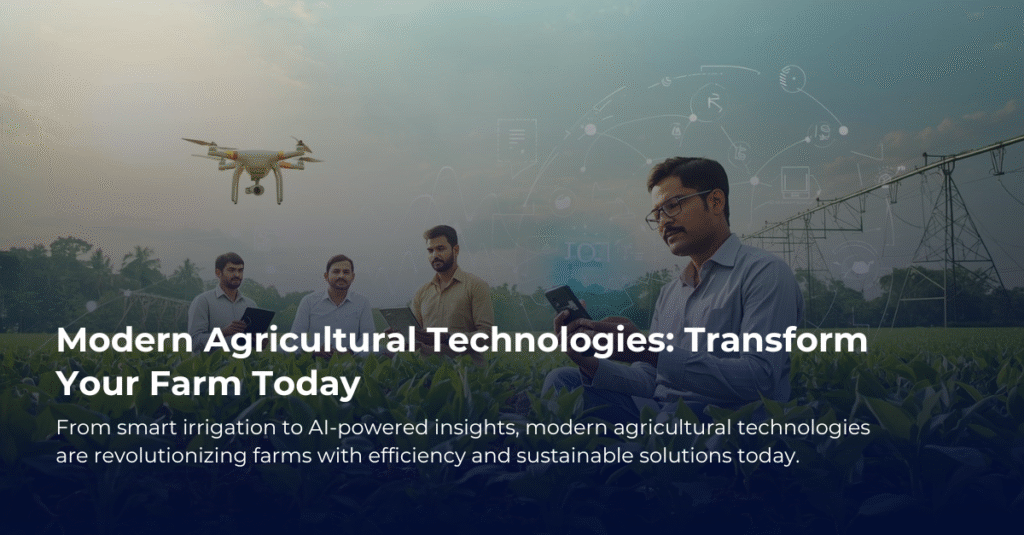Embracing Modern Agricultural Technologies for Effective Farm Management
Picture this: you’re sitting at a coffee shop, and across the table, you’re talking with a farmer who’s frustrated because despite working long hours, their crop yield isn’t improving. You might be surprised to learn that the answer might not be in the soil or weather, but in technology. Many people assume that farming is all about manual labor, but modern agricultural technologies are changing the game in ways most people don’t even realize.
What Are Modern Agricultural Technologies?
So, what exactly does “modern agricultural technologies” mean? Simply put, it refers to the use of innovative tools and methods to enhance farming efficiency and effectiveness. This can include things like:
- Precision Farming: Using data and analytics to determine the best time to plant, irrigate or harvest.
- Drones: Giving farmers a bird’s-eye view of their fields, making it easier to spot issues.
- Automated Equipment: Machinery that can do work like planting and harvesting, saving time and reducing manual labor.
- Data Analysis: Collecting and interpreting data to make informed decisions about what crops to grow and when to sell.
These technologies are not just for large farms. Even small-scale farmers can benefit from the advancements that help them work smarter, not harder.
How Does It Work? Let’s Break It Down
Imagine you’re trying to throw darts at a board, but you’re blindfolded. You might hit the target eventually, but it’s going to take time, and you’re likely to miss more often than you hit. Now, what if you could see the board? You’d hit the target much more consistently.
In farming, technologies like precision farming give farmers the “sight” they need. They use sensors and GPS technology to gather data on soil quality, weather patterns, and crop health. This information allows farmers to make specific decisions about irrigation, fertilization, and pest management, so they are not just guessing. This leads to better yields, less waste, and more profit.
Real-World Examples
Let’s look at some farmers who have embraced technology in their daily operations:
- A Vineyard in California: One vineyard began using drones to monitor grape health. They discovered specific areas needed different treatment, allowing them to improve grape quality and yield.
- A Corn Farmer in Iowa: By implementing GPS-guided tractors, a corn farmer was able to plant and harvest crops more efficiently. Less overlap in planting margins saved seed and fertilizer costs.
Overcoming Misconceptions
One common misconception is that technology is too expensive or complicated for the average farmer. While initial investments can be significant, think about it like upgrading your phone. The benefits of a newer model often outweigh the costs. Many agricultural technologies are designed to be user-friendly, and training programs are available to help farmers get up to speed.
Getting Started with Modern Technologies
If you’re interested in integrating some of these technologies into your own farm management, where should you start? Here are a few tips:
- Research: Look into different technologies relevant to your crops or livestock.
- Talk to Peers: Join local farming communities to see what others are using and what has worked for them.
- Attend Workshops: Many organizations offer training sessions on modern agricultural practices.
Implementing these technologies doesn’t have to happen overnight. Start small by incorporating one or two tools and gradually expand as you become more comfortable.
Conclusion
Modern agricultural technologies hold the promise of more productive and sustainable farming. By embracing these tools, farmers can not only increase efficiency but also create a more resilient approach to agriculture. So next time you hear about farming technology, remember that those advancements are paving the way for a more prosperous future for farmers of all sizes.
Now, how about that second cup of coffee? You’ve got plenty to think about, and I’m here if you have more questions!







